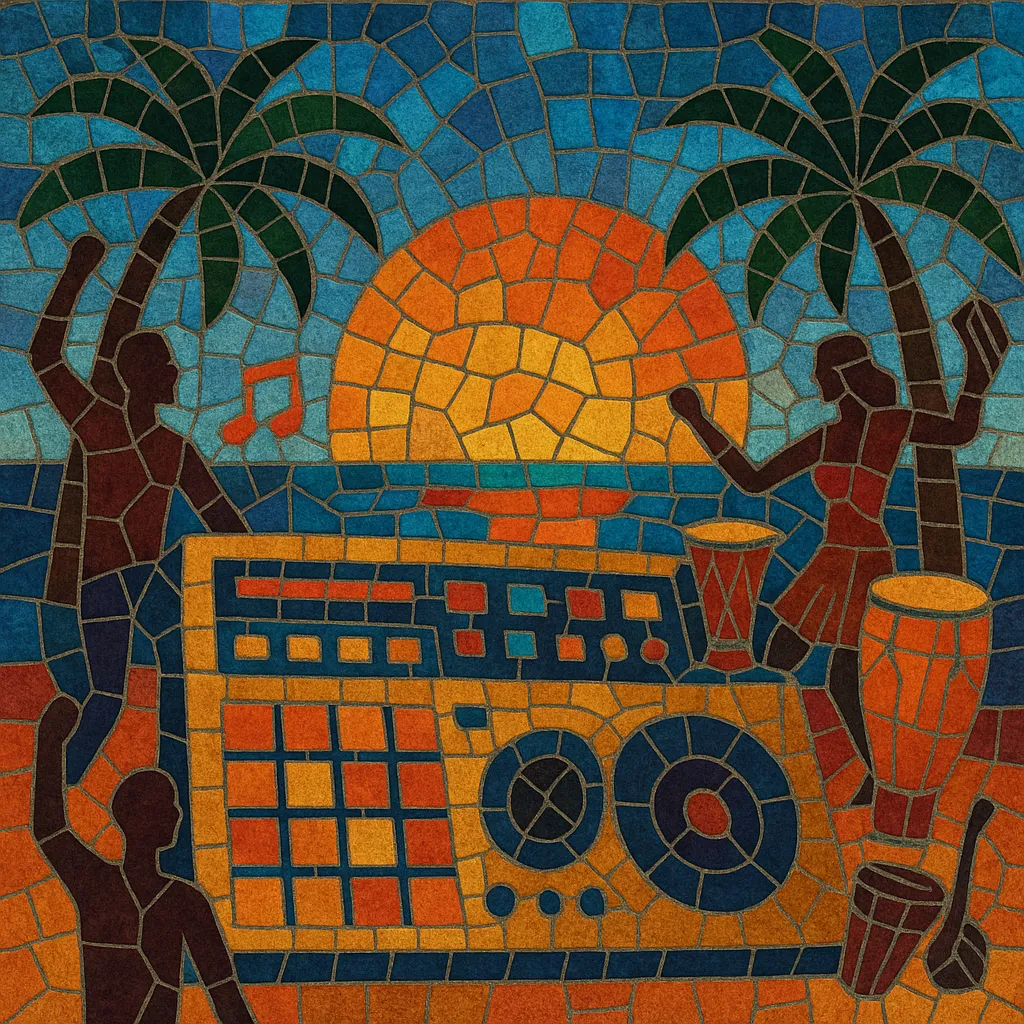Electro latino (often stylized as electrolatino) is a club-oriented fusion that blends the four-on-the-floor energy of European EDM and electro house with Spanish/Latin pop songwriting and Caribbean rhythmic accents.
It typically features bright supersaw or pluck synth leads, sidechained pads, and festival-style drops, combined with Latin percussion (congas, güira, timbales) and chantable Spanish hooks. Lyrical themes favor summer romance, parties, and coastal imagery, mirroring the genre’s warm, feel-good sonic identity.
The style crystallized in Spain in the early 2010s and rapidly spread across European and Latin markets through high-rotation radio singles and compilation series, normalizing Spanish-language vocals and Latin rhythms on mainstream EDM platforms.
Electro latino coalesced in Spain as DJs and producers began fusing electro house drops and EDM sound design with Spanish-language pop and Caribbean rhythmic motifs. Early champions such as Juan Magán helped codify the aesthetic through radio singles and dedicated compilation series, positioning Spanish vocals at the center of European club sounds.
Between 2011 and 2013, the style dominated Iberian charts and beach-club circuits. Anthems like "Rayos de Sol" (José de Rico & Henry Méndez), "Bailando por el Mundo" (Juan Magán), and "Tacatá" (Tacabro) showcased the template: 4/4 kicks around 125–128 BPM, sun-soaked synths, and crowd-chant refrains. Crossovers with international artists (e.g., Pitbull, Don Omar, Enrique Iglesias) amplified the sound beyond Spain, while adjacent Latin-dance hits (kuduro-, merengue-, and reggaeton-inflected) circulated through electrolatino playlists, cementing a pan-Latin club identity.
As streaming reshaped pop, electrolatino’s hallmarks—Spanish hooks over EDM drops and Latin percussion—permeated broader Latin pop and global dance music. The genre helped normalize Spanish vocals on festival-friendly production across Europe and parts of the Americas. In parallel, scenes like Colombian guaracha EDM and tropical-leaning pop singles absorbed aspects of the electrolatino formula (tempo, drops, chantable hooks), even as reggaeton and moombahton dominated the wider urban-Latin landscape.
Electro latino left a durable imprint on the way Spanish-language pop engages with EDM. Its upbeat, summer-forward aesthetic continues to inform radio-ready dance singles, beach-club programming, and cross-border collaborations featuring bilingual hooks, glossy synth work, and Latin percussion in a 4/4 framework.


